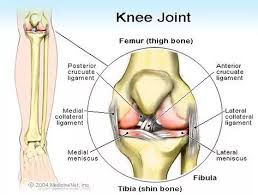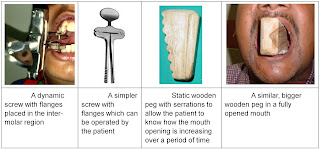BASIC OF AN ELECTIC APPROACH :-
Eclectic approach is a method of language education that combines various approaches and methodologies to teach language depending on the aims of the lesson and the abilities of the learners. Different teaching methods are borrowed and adapted to suit the requirement of the learners. It breaks the monotony of the class. In addition, It is a conceptual approach that does not merely include one paradigm or a set of assumptions.
# INTRODUCTION :-
There is little empirical evidence as to whether an integravite and eclectic approach or a specific concept approach is the most effective when working with children. It appears to the authors that there are a number of common factor to all approaches and philosophies , even where their implementation and emphasais may differ.
They are :
> assessment and planning is necessary at all stages
> early treatment is essential
> team work is important
> the child must be motivated and involved
> parents should be involved and supported.
# ELECTISUM :-
Eclecticism is a conceptual approach that does not hold rigidly to a single paradigm or set of assumptions, but instead draws upon multiple theories, styles, or ideas to gain complementary insights into a subject, or applies different theories in particular cases. However, this is often without conventions or rules dictating how or which theories were combined.
It can sometimes seem inelegant or lacking in simplicity, and eclectics are sometimes criticized for lack of consistency in their thinking. It is, however, common in many fields of study. For example, most psychologists accept certain aspects of behaviorism, but do not attempt to use the theory to explain all aspects of human behavior.
Eclecticism in ethics, philosophy and religion is also known as syncretism.
# APPROACH METHOD :-
- There are varied approaches and methods used for language teaching. In eclectic approach, the teacher can choose from these different methods and approaches:
> Grammar-translation Method: It is a method of teaching languages by which students learn grammatical rules and then apply those rules by translating between the target language and the native language.
> Direct Method: In this method the teacher refrains from using the students' native language. The target language is directly used for teaching all the four skills—listening, speaking, reading and writing.
> Structural-situational Approach: In this approach, the teacher teaches language through a careful selection, gradation and presentation of vocabulary items and structures through situation based activities.
> Audio-lingual/Audio-visual Method: In this style of teaching students are taught through a system of reinforcement. Here new words and grammar are directly taught without using the students' native language. However, unlike direct method, audio-lingual method does not focus on vocabulary. Instead, the teacher focuses on grammar through drill and practice.
> Bilingual Method: The word 'bilingual' means the ability to speak two languages fluently. In bilingual method, the teacher teaches the language by giving mother tongue equivalents of the words or sentences.
> Communicative Language Teaching: This approach lays emphasis on oral method of teaching. It aims to develop communicative competence in students.
> Total-Physical Response: It is based on the theory that memory is enhanced through association with physical response.
> The Silent Way: In this method the teacher uses a combination of silence and gestures to focus students' attention.
# ADVANTAGES :-
> The teacher has more flexibility.
> No aspect of language skill is ignored.
> There is variety in the classroom.
> Classroom atmosphere is dynamic.
> These types of programs not only negotiate teacher skill-development within an improved recognition of and respect for cross-cultural and multi-linguistic classroom settings, but also encourages student pride in their heritage, language, communication preferences and self-identity.
# DISADVANTAGES :-
> It does not lend itself to prediction and control of behaviour.
> It's difficult to identify the relative contributions of each approach.
> Explanation of behaviour may become "watered down" when combining many perspectives.
> There are practical difficulties in investigating the integration of the approaches.
> It does not lend itself to hypothesis testing.
# DURING TREATMENT :-
1. Neurodevlopmental sequences should be considered but not followed rigidly.
2. Postural mechanisms and normal postural tone should br developed involving
> postural fixation
> antigravity mechanisms
> righting reaction
> equilibrium reactions.
3. Deformity should be prevented.
4. Afferent stimuli can be used
> touch
> temprature
> vision
> pressure
> stretch
> hearing
5. Sensorimotor experiences should be encouraged
> voluntary skilled movement
> cognition
> perception
> function
6. Gross motor activities generally precede fine motor movements.
7. Repetition & reinforcement are necessary
8. The devlopment of movement should lead to purposeful activity and independent function.
Eclectic approach is a method of language education that combines various approaches and methodologies to teach language depending on the aims of the lesson and the abilities of the learners. Different teaching methods are borrowed and adapted to suit the requirement of the learners. It breaks the monotony of the class. In addition, It is a conceptual approach that does not merely include one paradigm or a set of assumptions.
# INTRODUCTION :-
There is little empirical evidence as to whether an integravite and eclectic approach or a specific concept approach is the most effective when working with children. It appears to the authors that there are a number of common factor to all approaches and philosophies , even where their implementation and emphasais may differ.
They are :
> assessment and planning is necessary at all stages
> early treatment is essential
> team work is important
> the child must be motivated and involved
> parents should be involved and supported.
# ELECTISUM :-
Eclecticism is a conceptual approach that does not hold rigidly to a single paradigm or set of assumptions, but instead draws upon multiple theories, styles, or ideas to gain complementary insights into a subject, or applies different theories in particular cases. However, this is often without conventions or rules dictating how or which theories were combined.
It can sometimes seem inelegant or lacking in simplicity, and eclectics are sometimes criticized for lack of consistency in their thinking. It is, however, common in many fields of study. For example, most psychologists accept certain aspects of behaviorism, but do not attempt to use the theory to explain all aspects of human behavior.
Eclecticism in ethics, philosophy and religion is also known as syncretism.
# APPROACH METHOD :-
- There are varied approaches and methods used for language teaching. In eclectic approach, the teacher can choose from these different methods and approaches:
> Grammar-translation Method: It is a method of teaching languages by which students learn grammatical rules and then apply those rules by translating between the target language and the native language.
> Direct Method: In this method the teacher refrains from using the students' native language. The target language is directly used for teaching all the four skills—listening, speaking, reading and writing.
> Structural-situational Approach: In this approach, the teacher teaches language through a careful selection, gradation and presentation of vocabulary items and structures through situation based activities.
> Audio-lingual/Audio-visual Method: In this style of teaching students are taught through a system of reinforcement. Here new words and grammar are directly taught without using the students' native language. However, unlike direct method, audio-lingual method does not focus on vocabulary. Instead, the teacher focuses on grammar through drill and practice.
> Bilingual Method: The word 'bilingual' means the ability to speak two languages fluently. In bilingual method, the teacher teaches the language by giving mother tongue equivalents of the words or sentences.
> Communicative Language Teaching: This approach lays emphasis on oral method of teaching. It aims to develop communicative competence in students.
> Total-Physical Response: It is based on the theory that memory is enhanced through association with physical response.
> The Silent Way: In this method the teacher uses a combination of silence and gestures to focus students' attention.
# ADVANTAGES :-
 |
| Eclectic Approach |
> The teacher has more flexibility.
> No aspect of language skill is ignored.
> There is variety in the classroom.
> Classroom atmosphere is dynamic.
> These types of programs not only negotiate teacher skill-development within an improved recognition of and respect for cross-cultural and multi-linguistic classroom settings, but also encourages student pride in their heritage, language, communication preferences and self-identity.
# DISADVANTAGES :-
> It does not lend itself to prediction and control of behaviour.
> It's difficult to identify the relative contributions of each approach.
> Explanation of behaviour may become "watered down" when combining many perspectives.
> There are practical difficulties in investigating the integration of the approaches.
> It does not lend itself to hypothesis testing.
# DURING TREATMENT :-
 |
| Physiotherapy Treatment Technique |
1. Neurodevlopmental sequences should be considered but not followed rigidly.
2. Postural mechanisms and normal postural tone should br developed involving
> postural fixation
> antigravity mechanisms
> righting reaction
> equilibrium reactions.
3. Deformity should be prevented.
4. Afferent stimuli can be used
> touch
> temprature
> vision
> pressure
> stretch
> hearing
5. Sensorimotor experiences should be encouraged
> voluntary skilled movement
> cognition
> perception
> function
6. Gross motor activities generally precede fine motor movements.
7. Repetition & reinforcement are necessary
8. The devlopment of movement should lead to purposeful activity and independent function.























